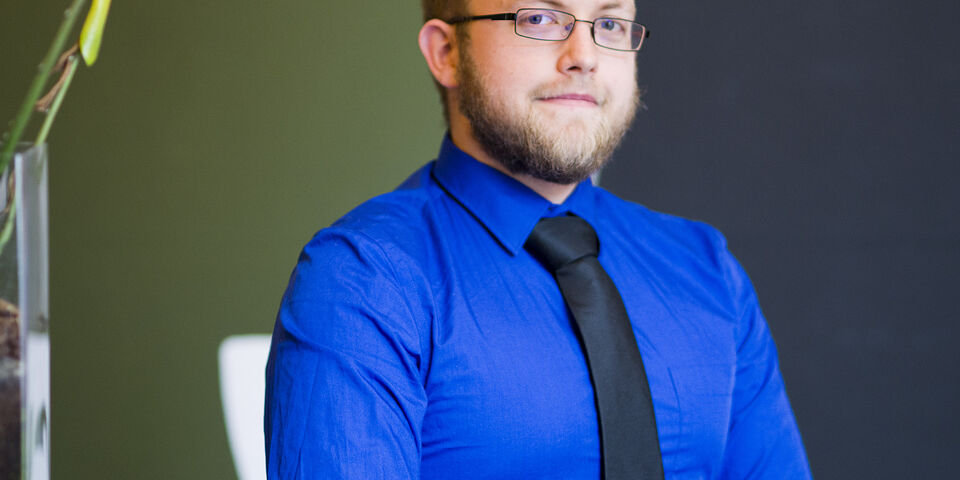Home Stretch | Fuel from nanowires
By means of nanowires of gallium phosphide the English PhD candidate Anthony Standing managed to convert sunlight into a ‘green’ fuel. His work in the Photonics and Semiconductor Nanophysics group also resulted in an article by his hand in the prominent journal Nature Communications.
The nanowires which Anthony Standing worked with were some one hundred nanometers in diameter - a thousand times thinner than a human hair. Those flimsy wires are exceptionally capable of converting sunlight into electricity, as the Englishman explains. “Especially if you consider how little material you actually need to establish this.”
Which is all the better, for the semiconductor gallium phosphide from which the nanowires are made is anything but cheap. “For this reason we developed a method in our group to loosen the nanowires from the base on which we grow them. After all, such a flimsy wafer of gallium phosphide with a thickness of two hundred micrometers and with a diameter of ten centimeters easily costs some two hundred euros. You really want to be able to reuse it.” Standing managed to ‘harvest’ far thinner nanowires than was possible before.
When he started his research, the nanowires worked nowhere as well as conventional solar panels. Since then, though, he has succeeded in increasing the efficiency of the nanowires by a factor of one thousand, so that they work ten times better now than conventional solar panels. According to him, his nanowires enabled him eventually to establish a ‘world record’ of hydrogen production from solar power by means of gallium phosphide. “The efficiency is above eighty percent of the theoretical maximum”, says Standing. “That is exceptionally high, especially when you consider that for this theoretical maximum you would have to keep the solar panel at the absolute zero of -273 degrees. Which is not realistic, of course.”
First author
Last summer the above results even led to a publication in Nature Communications, where Standing was mentioned honorably as the first author. Nonetheless, Standing’s academic career ends after his PhD. He and his Dutch wife, whom he met in Cambridge, and for whom he once came to Holland, got a son last month. “Which is another reason why I don’t fancy trotting the globe as a postdoc.”
Meanwhile the Englishman has found a job here as a consultant for a company in conventional solar panels. “Of course I also understand how those panels work, and I have experience in testing solar cells. You can do so, for instance, by putting one under tension and looking at the light they then emit; in ‘reverse mode’ as it were.”
Standing believes in a future for nanowires, he says. “Although they come with many advantages, I still expect that it will be at least ten years before you will find them in commercial solar cells.”


Discussion